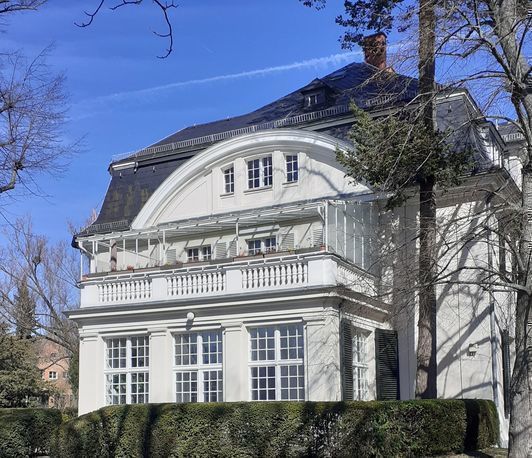Tabletop transient NEXAFS spectroscopy with a laser-produced plasma source
- MP Department Seminar
- Date: Jun 14, 2024
- Time: 09:30 AM - 10:30 AM (Local Time Germany)
- Speaker: Ioanna Mantouvalou
- SyncLab Combined X-ray methods at BLiX and BESSY II’, Helmholtz-Zentrum Berlin, Germany
- Location: Haber Villa
- Room: Seminar Room
- Host: Department of Molecular Physics
- Contact: trinter@fhi-berlin.mpg.de

Laboratory-based laser-produced plasma (lpp) soft X-ray sources achieve high brightness and stability in the EUV and XUV range. With emission energies beyond 1.6 keV and stable operating times in the range of hours, they already offer numerous experimental possibilities that are independent and supplemental to investigations at large scale facilities. One such application is near edge X-ray absorption fine structure (NEXAFS) spectroscopy for the elucidation of the electronic structure of a sample. In combination with optical pumping, photo-induced dynamics are probed, which shed light on the structure-function relationship of complex materials.
For optical pump – soft X-ray probe NEXAFS spectroscopy, we operate a setup consisting of a highly brilliant lpp source [1] and a reflection zone plate spectrometer [2]. The system can probe X-ray absorption edges between 200 eV and 1400 eV with a resolving power of ~ 1000 and a time resolution of 500 ps [3]. Due to the high stability and efficiency of the setup, dynamic changes in absorption of the excited sample down to 10-4 are accessible. Both, measurements on solid thin films as well as molecules in solution [4] will be presented, demonstrating the feasibility of experiments in the laboratory, which are typically performed at large scale facilities.
References
[1] I. Mantouvalou et al, Rev. Sci. Instr. 86, 2015, 035116
[2] A. Jonas et al, Opt. Express 27, 2019, 36524-36537
[3] H. Stiel et al, Int. J. Mol. Sci. 22(24), 2021, 13463
[4] R. Gnewkow et al, Optica 2024, accepted